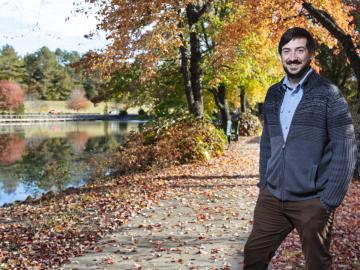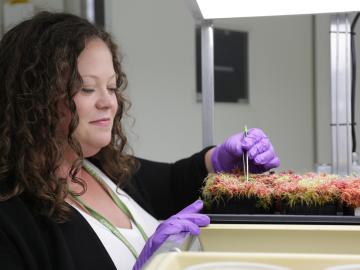
Filter News
Area of Research
- (-) Advanced Manufacturing (1)
- (-) Biology and Environment (58)
- (-) Materials (30)
- (-) Nuclear Science and Technology (8)
- Biology and Soft Matter (1)
- Energy Science (37)
- Fusion and Fission (14)
- Fusion Energy (5)
- Isotopes (1)
- Materials for Computing (5)
- National Security (5)
- Neutron Science (13)
- Supercomputing (22)
News Topics
- (-) Energy Storage (8)
- (-) Environment (64)
- (-) Fusion (8)
- (-) Materials Science (20)
- (-) Mercury (6)
- (-) Polymers (5)
- 3-D Printing/Advanced Manufacturing (9)
- Advanced Reactors (4)
- Artificial Intelligence (8)
- Big Data (8)
- Bioenergy (29)
- Biology (43)
- Biomedical (10)
- Biotechnology (7)
- Buildings (1)
- Chemical Sciences (11)
- Clean Water (10)
- Composites (3)
- Computer Science (19)
- Coronavirus (6)
- Cybersecurity (1)
- Exascale Computing (5)
- Frontier (3)
- Grid (2)
- High-Performance Computing (13)
- Hydropower (5)
- Isotopes (7)
- Machine Learning (6)
- Materials (22)
- Mathematics (3)
- Microscopy (13)
- Molten Salt (1)
- Nanotechnology (10)
- National Security (2)
- Neutron Science (12)
- Nuclear Energy (22)
- Partnerships (4)
- Physics (12)
- Quantum Computing (1)
- Security (2)
- Simulation (9)
- Space Exploration (2)
- Summit (7)
- Transportation (4)
Media Contacts

John “Jack” Cahill is out to illuminate previously unseen processes with new technology, advancing our understanding of how chemicals interact to influence complex systems whether it’s in the human body or in the world beneath our feet.

Matthew Craig grew up eagerly exploring the forest patches and knee-high waterfalls just beyond his backyard in central Illinois’ corn belt. Today, that natural curiosity and the expertise he’s cultivated in biogeochemistry and ecology are focused on how carbon cycles in and out of soils, a process that can have tremendous impact on the Earth’s climate.

Millions of miles of pipelines and conduits across the United States make up an intricate network of waterways used for municipal, agricultural and industrial purposes.

ORNL researchers are deploying their broad expertise in climate data and modeling to create science-based mitigation strategies for cities stressed by climate change as part of two U.S. Department of Energy Urban Integrated Field Laboratory projects.

ORNL has provided hydropower operators with new data to better prepare for extreme weather events and shifts in seasonal energy demands caused by climate change.

Researchers at ORNL are tackling a global water challenge with a unique material designed to target not one, but two toxic, heavy metal pollutants for simultaneous removal.

Chemical and environmental engineer Samarthya Bhagia is focused on achieving carbon neutrality and a circular economy by designing new plant-based materials for a range of applications from energy storage devices and sensors to environmentally friendly bioplastics.

Science has taken Melanie Mayes from Tennessee to the tropics, studying some of the most important ecosystems in the world.

As the United States moves toward more sustainable and renewable sources of energy, hydropower is expected to play a pivotal role in integrating more intermittent renewables like wind and solar to the electricity grid

Microorganisms may provide hope that peatlands can withstand hotter temperatures in a changing climate.


